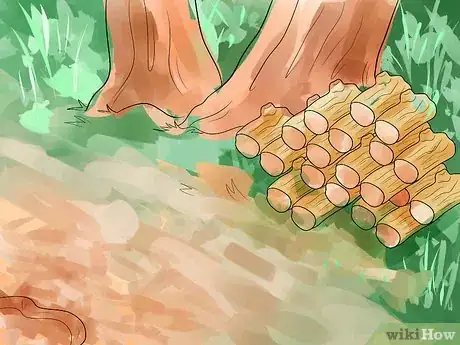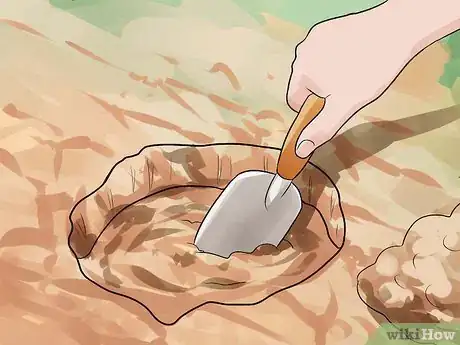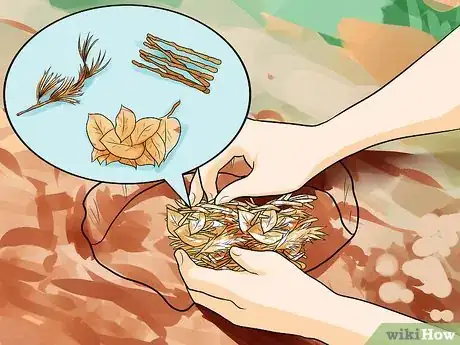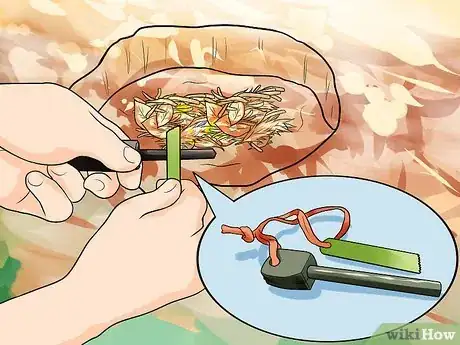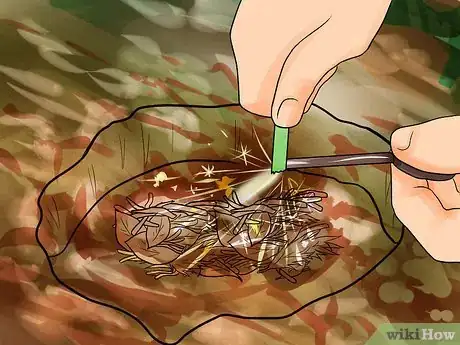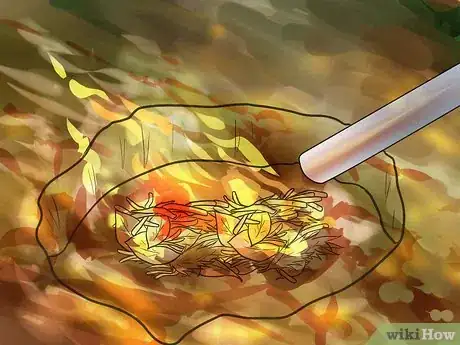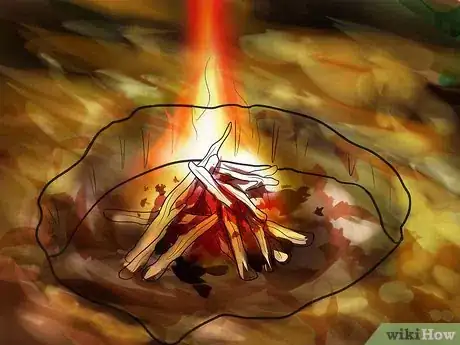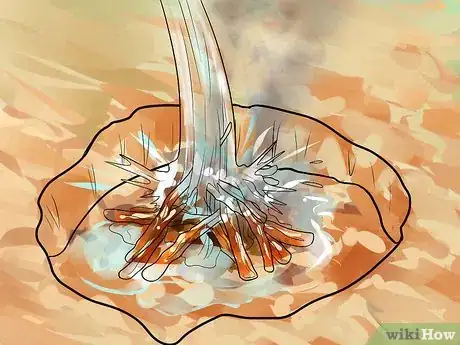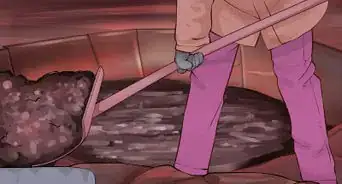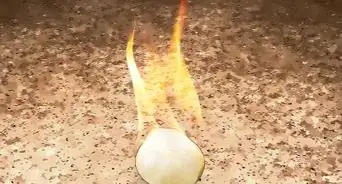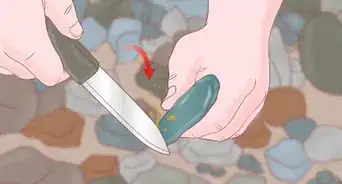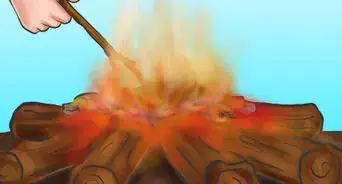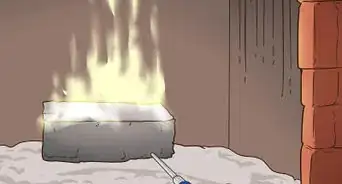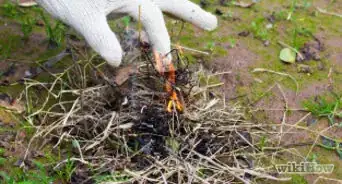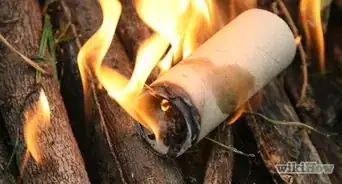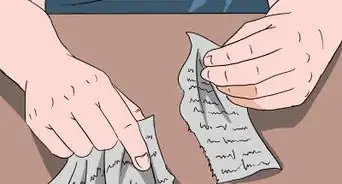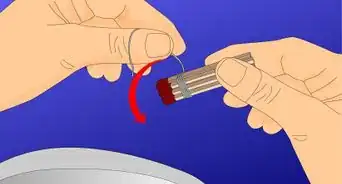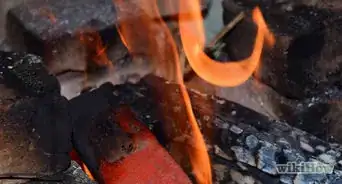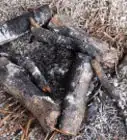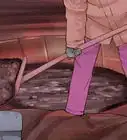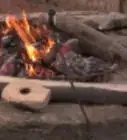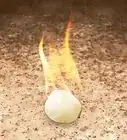wikiHow is a “wiki,” similar to Wikipedia, which means that many of our articles are co-written by multiple authors. To create this article, 29 people, some anonymous, worked to edit and improve it over time.
This article has been viewed 129,790 times.
Learn more...
Almost anyone who has tried to start a fire without matches or a lighter has quickly discovered just how hard it can be. You can rub two sticks together for a long time and still end up with nothing. Luckily, small and easily portable magnesium block fire starters have become common enough that they can be found in nearly any sporting goods or outfitter store. While nearly everyone can be successful at starting a fire with such a tool, there are a few things you need to know before you make a fire of your own.
Steps
Preparing for a Fire
-
1Find the right location for a fire. Not every place is suitable for a fire, either because it can be difficult to start or because of the dangers involved.
- Try to find a place not in the wind. A breeze can blow out fires that you attempt to start or spread fires out of control. If you can, find a sheltered area where it will not be a factor.
- Look for a location that is near a supply of fuel (presumably wood). Fires can be surprisingly "hungry," and it is impractical to carry heavy wood great distances.
- Find an area where this is little chance of fire spreading. Try to find a clearing or area with little grass and some distance (a few yards/meters) from any trees or overhanging branches.
-
2Prepare the fire site. In order to discourage the spread of fire, you must clear the area around the intended fire site.
- Small dug-out fire pits were once a common way of limiting the reach of fire. Make the pit a bit larger than the intended fire in order to maintain distance between the flame and any grass.[1]
- Alternatively, mound fires are commonly advocated among the Boy Scouts and other outdoor enthusiasts today.[2] As the name suggests, you start by building a mound of sand or dirt (again, larger than the intended fire). This elevates it above the surrounding grass or other materials that cannot always be sufficiently cleared).
- If you cannot get out of the wind, prepare a windbreak for the fire. Perhaps an old damp log can be used to limit the effect of the wind on your fire site. If you do choose a potentially flammable material for your windbreak, make sure there is sufficient distance to prevent it from catching on fire.
Advertisement -
3Gather the necessary materials and assemble them. You must be able to both start and sustain a fire. If you have chosen your location wisely, there should be plenty of fuel around. That is not all that is needed to start a fire, however.[3]
- If you are using wood, you will not start by lighting large branches on fire. Instead, you must gather kindling, including such dried materials as leaves, conifer needles, and small twigs.
- You should also assemble the kindling and some medium-sized branches (roughly the size of an adult finger) in the selected fire site. The kindling will burn quickly, and even if you can add more kindling to the initial fire there must be something in place to sustain the flames. Organize this before you try to start your fire.
Using the Fire Starter to Make a Fire
-
1Scrape the magnesium bar. The magnesium bar is a really remarkable camping or survival tool. Magnesium is an incredibly flammable material, and in certain circumstances ignited magnesium has known to reach temperatures of over 5,000 °F (2,760 °C). Obviously, something that burns with this intensity can rapidly create a powerful fire.
- If you are using a knife, try to use the back of the blade if you can; you don't want to damage the knife edge, and you are also not trying to cut slivers out of the bar. You want small flakes that will ignite easily.
- It can be difficult to determine the quantity of magnesium necessary to start a fire. Too little and you won't succeed in starting a fire; too much and you'll have a 5000 degree fireball in your face. That said, it might be good to start small and then, only if that fails, add more scrapings.
-
2Strike the flint to create spark. Usually one side of these magnesium bars contains a flint strip. Scrape that with your knife to create a spark.
- The quantity of spark will be determined by the amount of force applied, the speed of the strike, and the angle of attack (degree at which the blade runs along the flint).
- Do not stab or slash at the flint. Drag the blade across the flint or, if you prefer, drag the flint over the edge of the knife while keeping the blade steady. The latter method may be safer.
-
3Encourage the development of a flame. If the kindling immediately ignites and catches fire, congratulations. If it instead smokes and smolders, you may need to gently blow onto the kindling until embers ignite into proper flames.
-
4Maintain the fire. Use larger branches after the fire has become established. Watch it closely to make sure it does not burn out of control or sparks do not spread to nearby fuel sources.
-
5Extinguish the fire before you leave. Make sure you douse the fire in water and stir the ashes until you are sure all embers are put out.[4]
Community Q&A
-
QuestionWhy do I need leaves in the fire?
 Community AnswerLeaves are usually dry, which makes them excellent at burning and helping start your fire.
Community AnswerLeaves are usually dry, which makes them excellent at burning and helping start your fire. -
QuestionWhat if I do not have a magnesium bar for the fire starter?
 PopeyedSpore26Community AnswerThis isn't likely to happen, because most fire starters have a magnesium bar. However, you can also use tinder, wood or any fuel on hand.
PopeyedSpore26Community AnswerThis isn't likely to happen, because most fire starters have a magnesium bar. However, you can also use tinder, wood or any fuel on hand. -
QuestionWhat if the fire spreads out of where you are holding it?
 Claire ComptonCommunity AnswerPut the fire out immediately (where the excess fire is), and then place moist dirt around the firepit (dirt extinguishes fire).
Claire ComptonCommunity AnswerPut the fire out immediately (where the excess fire is), and then place moist dirt around the firepit (dirt extinguishes fire).
Warnings
- Fire is dangerous and should not be treated as a plaything. Magnesium bars are obviously fire hazards, and must be treated appropriately.⧼thumbs_response⧽
References
- ↑ https://smokeybear.com/en/prevention-how-tos/campfire-safety/how-to-prepare-your-campfire-pit
- ↑ http://www.scouting.org/scoutsource/BoyScouts/TeachingLeaveNoTrace/035_minimize.aspx
- ↑ https://smokeybear.com/en/prevention-how-tos/campfire-safety/how-to-build-your-campfire
- ↑ https://smokeybear.com/en/prevention-how-tos/campfire-safety/how-to-maintain-and-extinguish-your-campfire
About This Article
To use a fire starter, begin by arranging sticks of kindling on top of dried leaves or twigs. Then, hold the magnesium bar over the kindling with the flint strip facing up. Next, drag a knife across the strip to create sparks that will ignite the kindling. Once the kindling is on fire, blow on it gently until the embers turn into flames. Finally, place larger branches on the fire as the flame gets bigger. For tips on how to determine the best place to start a fire, read on!
